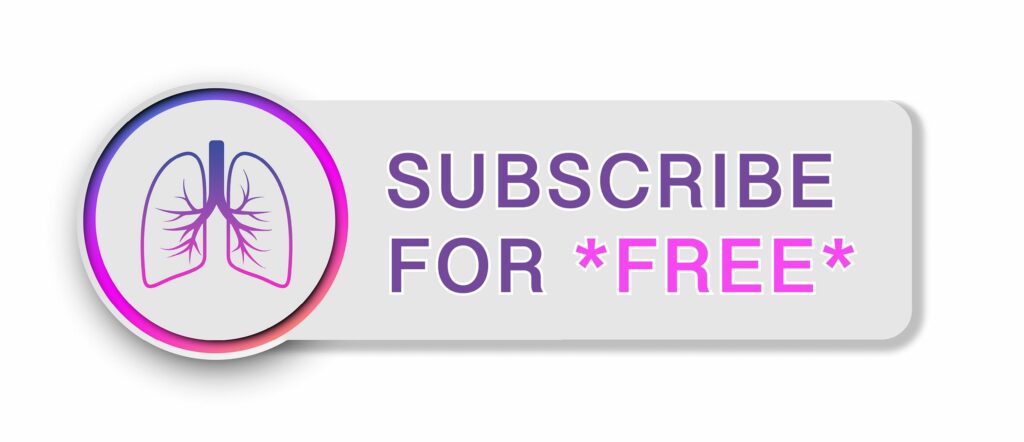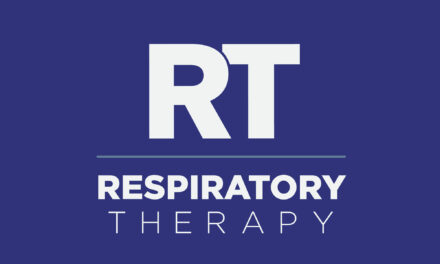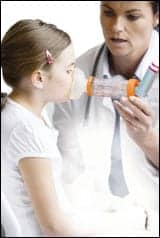Its focus on staff advancement, integrated ventilation monitoring, and a new obstructive sleep apnea program has helped make the Vanderbilt Respiratory Care Department one of the best in the nation.
By Laurel Petriello
The name of the game at Vanderbilt University Medical Center (VUMC) in Nashville, Tenn, is diversity. Comprised of Vanderbilt University Hospital and Monroe Carell Jr. Children’s Hospital at Vanderbilt, the combined medical center is the largest of its kind in the middle Tennessee region and administers care to patients of all ages and needs.
“We have so many critical care units and so many specialties here at Vanderbilt. Because we are a regional trauma unit, burn unit, and heart hospital, we have a very high acuity of patients,” said Anna Ambrose, MS, RRT, administrative director of the Respiratory Care Department and Vanderbilt University Hospital. “Our hospital is more than 10 times the size of most units in the small surrounding communities, so our team has to be well-skilled and able to handle a diverse patient population. That’s what makes us really unique.”

And she’s right. With six intensive care units, including a burn unit, trauma unit, surgical unit, neuro care unit, cardiovascular unit, and medical unit, the skill-set of the Respiratory Care Department runs the gamut from critical care to chronic health conditions.
Ambrose, who celebrates her 33rd year with Vanderbilt this month, began her career with the medical center in 1980 as a registered respiratory therapist. During her tenure, she has climbed the ladder to in-service education, department manager, and eventually found her way to the top as administrative department director—typical of the stellar team of managers, supervisors, registered respiratory therapists, and certified respiratory therapists who have helped the hospital ascend to one of the top hospitals in the nation.

The Breakdown
For their combined 832 beds, Vanderbilt University Medical Center employs 179 respiratory therapists who have RRT and CRT credentials, with 102 therapists on staff at Vanderbilt University Hospital and 77 comprising the staff for the adjoining children’s hospital. The Respiratory Care Department sees the bulk of their work in critical care within their six intensive care units, where at any given time 20 to 24 therapists are on staff.
The same goes for the children’s hospital, where day shift or night shift, 15 therapists are on staff to cover the neonatal intensive care unit and pediatric intensive care unit. Each critical care unit has a core respiratory team whose members are always assigned to these units. And while it is not the norm, some therapists float between specialties.

Climbing the Ladder
Staff autonomy, responsibility, and advancement are key ingredients to the respiratory therapist’s role at VUMC and the opportunity provided for advanced staff development is one that is in high demand.
In 2011, the hospital developed the Clinical Ladder program for respiratory therapists to excel within their field to the capacity of their choice. In accordance with the program, entry-level therapists begin their roles at VUMC as an RRT-1. After 1 year, those with RRT-1 status have the opportunity to obtain an RRT-2 credential, which translates to a higher clinical skill rate, greater education and responsibility, more critical care certification credentials, and increased financial incentive.
In its current configuration, the program allows respiratory therapists to reach an RRT-3 status. Higher ratings are planned for future staff development, according to Craig Rooks, BS, RRT, manager and educator for the Respiratory Care Department. Rooks oversees the Clinical Ladder program. “There’s very little mobility within most respiratory care departments, but we understand that we have some high performers. In years past, there was no way to recognize these people. With the Clinical Ladder, we can,” he said.
“Implementation of the [program] gave people the opportunity for development and growth,” added Ambrose. “We created levels for people to excel to, with both financial and professional incentives, and more responsibilities. [It] gave people an opportunity to step up in their careers if they wanted to. A lot of hospitals don’t have that. It’s a new concept in respiratory care. It’s been present in nursing for awhile, but it has just started to spill over into other departments.”
A big part of an RRT-2’s role, in conjunction with a university hospital, is community education. The therapists work very closely with house staff, including residents and fellows, as well as interns and students, to teach and participate in university research.
“Part of my role is helping those therapists [in the Clinical Ladder program] to give in-services or help them to develop in-services to give,” said Rooks. “They help teach other respiratory therapists, as well as nurses, physicians, or anybody on the multidisciplinary team. I help develop my staff to also go out and teach others.”
Putting this work into action, each spring for the last 25 years, the department has hosted the Respiratory Care Spring Seminar, a continuing education event for RTs and health care practitioners in the middle Tennessee and northern Alabama regions.

Resourcing Technology
The respiratory staff at VUMC is perhaps most proud of the innovative technology the hospital has instituted to help maintain a high level of quality patient care and to wean patients off mechanical ventilation at a more rapid rate than other hospitals across the nation.
“We have a really progressive IT department here at Vanderbilt,” explained Ambrose. “One of the things they’ve helped us to develop is dashboards on each computer screen in the critical care units. The purpose of the dashboard is to monitor patient status, get them off the ventilator quicker, and reduce ventilator-associated pneumonia.”
She continued, “On this dashboard, we can see the results of all patients, and especially all patients on ventilators. Of the patients on ventilators, we can see those with whom the respiratory therapists have completed a daily spontaneous breathing trial and the results of those trials, which patients still need a trial, which patients still failed the trial, and more. It’s all color-coded on the dashboard so each person can see the status of each patient when they walk into a unit. It really helps everyone to stay focused and on task.”
According to Michael Fisher, RRT, the day shift and night shift respiratory therapists work in tandem to complete a daily spontaneous breathing trial with each patient to assess for weaning or extubation readiness. If the patient passes the trial, they can begin to consider extubation. “The respiratory therapists drive the weaning,” continued Ambrose. “We don’t give individual orders to wean. They have a lot of autonomy to get these patients off the ventilator. There’s a really good trust relationship between the physicians, the respiratory therapists, and the nurse practitioners.”
The combination of the dashboard, the protocols, and the autonomy that the therapists have in managing ventilator settings allows the VUMC Respiratory Care Department to get patients off mechanical ventilation in a progressive fashion.
In addition to this in-house technology, the department has recently implemented the Neurally Adjusted Ventilatory Assist (NAVA) system software for use with the hospital’s SERVO-i ventilator fleet, by MAQUET Medical Systems. The NAVA system involves a gastric tube with electrode sensors that sends a signal back to the ventilator to help with ventilator sensitivity and to allow the respiratory therapists to learn more about the patient’s breathing work.
“It’s something new that we’ve started within the past few weeks,” said Rooks. “It’s very new to us and the staff is excited about using technology at the forefront [of the field].”

Instituting New Protocols
In an effort to work more efficiently and provide better care, the VUMC’s Respiratory Care Department is always hard at work to institute new facility-wide procedures and protocols. The most recent of these protocols is the introduction of an ongoing obstructive sleep apnea (OSA) program, which began in the fall of 2011 to reduce complications of patients with known OSA for their stay within the hospital.
“When people come into a large academic medical center, that small piece of information is often difficult to communicate to [all] staff members who will see those patients,” explained Ambrose. “We have developed an integrated system across facility-wide technology in the hospital. From the time [patients] are admitted and have had their nursing admission history completed, we’ve recorded that information into an electronic physician order and an electronic message that gets sent to the Respiratory Care Department so a respiratory therapist can evaluate the patient at bedside shortly after admission.”
Patients are assessed by a respiratory therapist to determine proper OSA treatment, if they brought their own equipment, or if they need to be provided with equipment. In conjunction with the new protocol, the hospital purchased 36 CPAP auto-titrating units to be used in the home. Prior to discharge, a respiratory therapist also meets with these patients to discuss their home CPAP use and makes appropriate plans to ensure patient compliance.
In addition to the OSA program, the department is eagerly working on creating a new bronchial hygiene protocol, also to be instituted facility-wide.
“We have a couple of postextubation protocols in one of our ICUs, but we’re really looking to go house-wide with the bronchial hygiene protocol—the idea being getting the right therapy to the right patient at the right time,” said Rooks. “We do a really good job with our weaning protocols that are in place and getting patients off the ventilators, so this would be an adjunct to the existing ventilatory weaning protocols and managing the hygiene protocols on the ventilators as well as off the ventilators.”

Everyone Wants In
Between the technology, career development, staff autonomy, and opportunity for advancement, the VUMC Respiratory Care Department model has become highly respected and sought after. “My turnover in the Respiratory Care Department is nearly nonexistent,” said Ambrose. “I have 110 full-time employees and I have no openings. Our turnover is one of the lowest out of any department in the entire medical center. The people like it here. They work really well with one another.”
This spring, Ambrose had approximately 40 applicants apply for a position within Vanderbilt’s Respiratory Care Department, but did not have any full-time positions in which to put them. When asked during their interviews why they wanted to work at Vanderbilt, they consistently replied with the same types of responses: they had heard great things about the staff and liked the way the staff works together; they liked the way the staff is respected and treated and the collegial attitudes they shared toward one other; and, lastly, they liked the management system in the department.
The success of Vanderbilt University Medical Center and its Respiratory Care Department was recognized by US News and World Report, which recently named VUMC as the top-ranked hospital in Tennessee and ranked it in the Top-10 nationally for pulmonology.
“For a respiratory therapist at Vanderbilt, everything is what you make of it. Put in the effort and the rewards can be great,” said Fisher. “I have had two books published. Without Vanderbilt, there is no way that would have happened. [This facility] can take you from a profession without a lot of advancement to doing all kinds of amazing things. The sky is the limit.”

RT
For further information, contact [email protected].











Will you be holding your seminar in the
fall for Respiratory Therapy for continuing eduction hrs….
Thank you,
Vivian
e